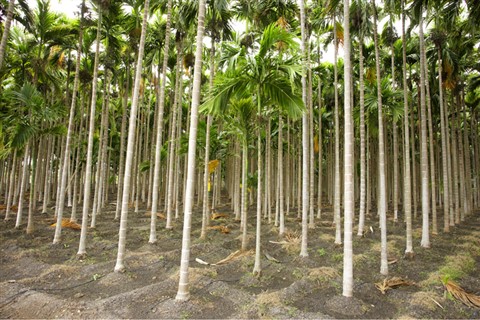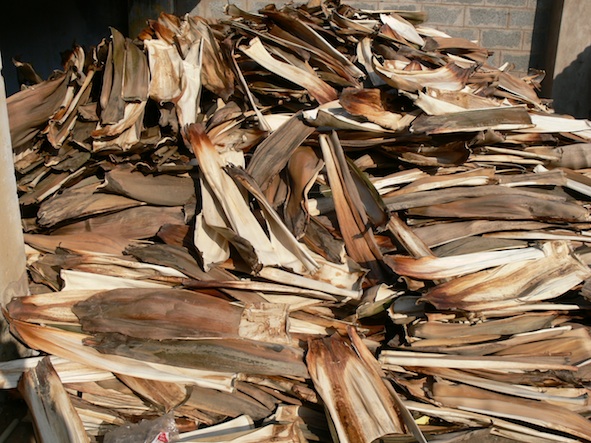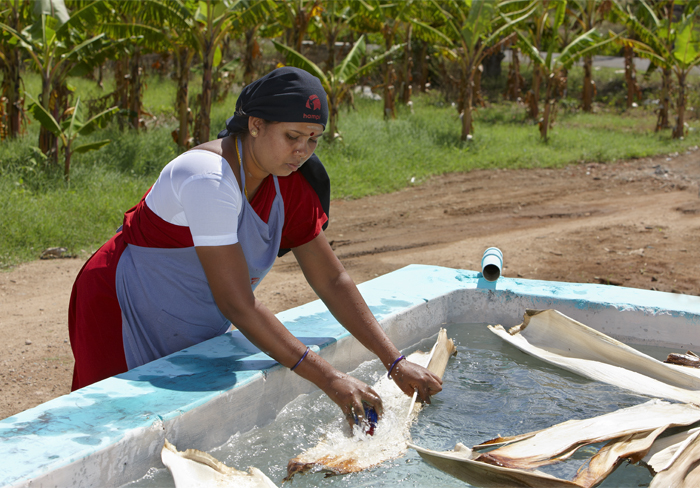The Hampi Story
The production process behind the Hampi plates is simple and durable; the naturally shed Areca palm bark is collected at palm plantations in India and heat-pressed into their shapes and sizes without using any toxic chemicals or waxes.
The underlying technique of our production was developed in the south of India, where recycling and making use of everything that nature has to offer is a way of life. We believe this lifestyle should be adopted by many more people
From plant to plate in 10 steps
- Around seven times a year the Areca Palm tree sheds its leaves
- The shed bark is collected from the ground by locals
- Only the bark part of the leaf is used. The green part is left on the ground as nutrition for the soil
- The collected bark is dried in the sun for a couple of days
- The dried bark is being transported to our production facility
- The bark is thoroughly washed, rinsed, cleaned and cut
- The bark is heat pressed and cut into shape by hydraulic or manually operated machines
- The finished plates are brushed and cleaned
- Every palm plate has to pass 10 different quality tests
- The approved plates are packed and ready for transport
We want to spread the “Hampi State of Mind” where we challenge our habits to minimize the impact we have on our surroundings. Hampi provides a stylish and natural alternative to tableware without harming the nature or wild life. Hampi Products are 100% biodegradable and “back yard” compostable.
Social Impact:
Hampi Products does not only tell the story of nature and where it comes from, it also tells the story of the people who transformed a piece of nature into a product.
Since starting the production of Hampi, disposables.bio (Natural Tableware BV) has created job opportunities in rural areas in southern India where the living standards are below average. We have been able to create value through our production, which has strengthened the local economy in the villages where the production is taking place. Our collaboration with micro- entrepreneurs has enabled the population to generate their own income and build a business and a community.



